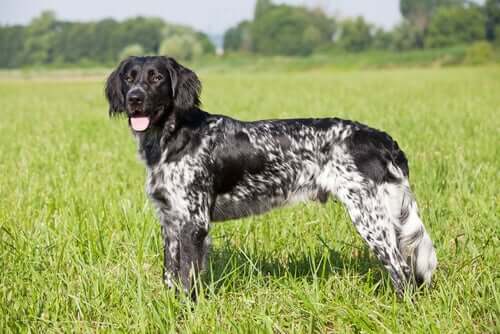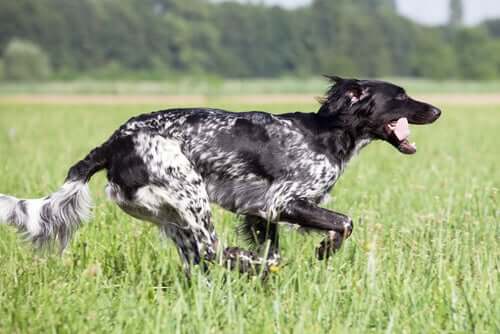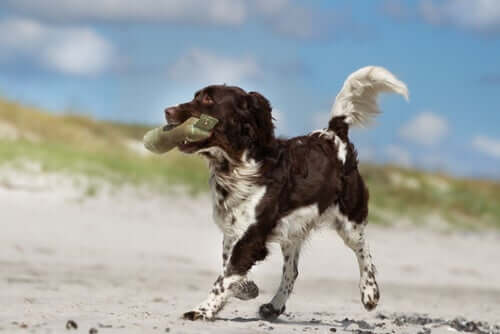The Large Münsterländer: A Versatile Hunting Dog

The large Münsterländer is native to Germany, and its survival over centuries is due to its great character and being very suited to a very specific type of hunting. It might look more like a Spaniel, but it’s a very different breed in reality. Today, we want to tell you more about this versatile hunting dog.
History of the large Münsterländer
The large Münsterländer is descended from German hunting breeds that were around between the 18th and 19th centuries. One of its clearest ancestors was specifically bred for hunting birds, and it also shares some genes with hounds and retrievers.
Pointing dogs began to be selectively bred and recognized as breeds in the late 19th century. This breed was grouped with long-haired pointing dogs and was selected according to their colors until it appeared as a recognized breed in the 1980s.

Characteristics
The large Münsterländer is a sleek hound with quite square bodily proportions, being equally as tall as they are long. They are agile and move smoothly, which helps them move quickly across fields.
They can measure between 23 and 26 inches in height and weigh around 65 lbs. They’re tall dogs but they don’t have a bulky build, and there’s no size difference between males and females.
They have medium-length, smooth, silky hair. However, their hair appears to be longer on their hind legs, ears, and tail. They’re only allowed to be black and white, either white with black stripes, spots, or patches. The head can be completely black with a streak or a white spot.
Their head is triangular and elongated, tapering slightly towards the nose, and the transition between the skull and the beginning of the nose is not very pronounced. Their snout is always black, as are their eyes.

They have large ears that fall down by the sides of their head. Their tail is raised when at rest, almost in line with their back, but can lift higher when they’re excited.
Behavior
The large Münsterländer is an especially docile and kind breed. They can adapt very easily and are very attached and dependent on their family, whether human or animal. They’re very friendly and have no trouble with strangers. They’re also capable of living with other animals.
Despite this, they’re also good guard dogs that know how to distinguish visitors from intruders. They’re tolerant and patient, which makes them a suitable breed for children, although obviously any interaction with children should always be supervised.
They’re very intelligent animals and are always be eager to learn. However, they can sometimes be stubborn, so training through positive reinforcement will be an important part of their education. They’re not a breed that learns through punishment or force.

This breed is a reliable hunter, but they don’t develop the instinct as early as other hunting dogs. They need a little more patience than other dogs but they’re very willing to work and are efficient in their tasks.
They’re lively and energetic dogs, but not nervous. As a result, they need three good quality walks a day. They also love to run through the mountains, so they’ll make the most of a getaway to nature from time to time.
Because they’re pointing dogs, chasing games, such as throwing balls or sticks, aren’t recommended. They’re too stressful and they trigger a hunting instinct that confuses them.
Caring for the large Münsterländer
The large Münsterländer suffers from few hereditary diseases. Statistically, they suffer more from the usual health problems in large dogs. Hip or elbow dysplasia, gastric torsion, and some eye problems are common in this breed.

Preventing and detecting these health problems should always be the responsibility of a vet. Even if your dog seems healthy, you should take them for regular check-ups and keep them up to date with their deworming calendar.
Dogs with droopy ears are prone to otitis and other infections. After each outing, you should do a quick check for any possible spikes or burrs and parasites on their legs or ears.
The large Münsterländer is an exceptional hunter, and it’s particularly good at hunting birds. They’re versatile dogs that can also be a great pet, docile with humans, patient with children, and friendly with other dogs and animals.